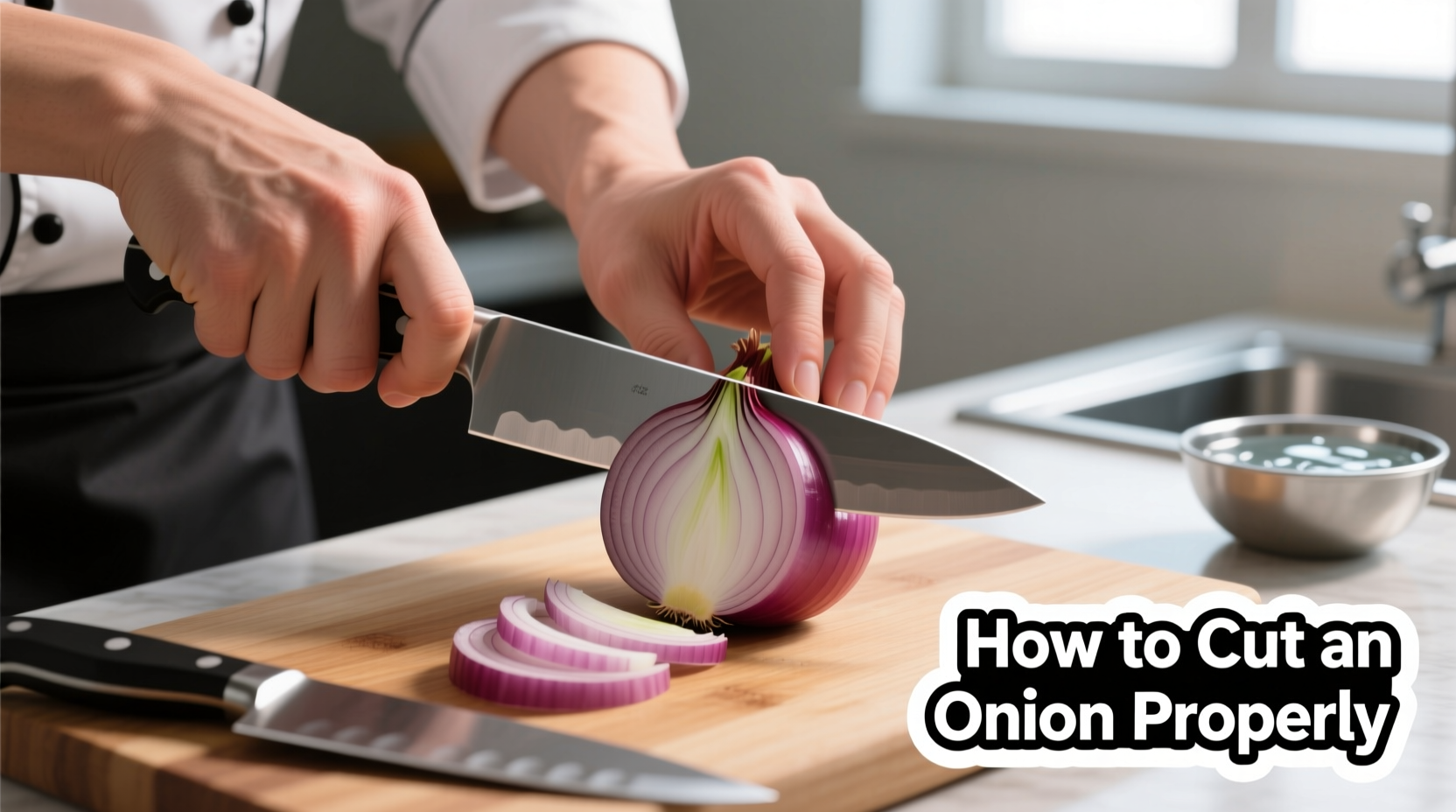Mastering the art of onion cutting transforms your cooking experience. Whether you're preparing a French onion soup or a simple stir-fry, proper technique ensures consistent results, reduces eye irritation, and enhances kitchen safety. Professional chefs follow specific steps that home cooks can easily adopt with practice.
Essential Tools for Perfect Onion Cutting
Before you begin, gather these kitchen essentials:
- A sharp chef's knife (8-10 inches)
- A stable cutting board (wood or plastic)
- A bowl of cold water (for tear prevention)
- A damp paper towel (to clean your hands)
According to the FDA Food Code, using a sharp knife actually reduces kitchen accidents compared to dull blades, which require more force and are more likely to slip.
Step-by-Step Onion Cutting Technique
Preparing the Onion
- Place the onion on its side and slice off the top (non-root end) about ¼ inch down
- Cut off the root end but leave enough to hold the onion together
- Peel away the papery skin and outer layer
- Place the onion cut-side down on your cutting board
Creating the Foundation Cuts
"The root end is your anchor," explains Antonio Rodriguez, professional chef and culinary instructor. "Leaving it intact maintains the onion's structure during cutting, preventing pieces from flying everywhere."
- Make vertical cuts from the top toward the root, spacing them about ¼-½ inch apart (don't cut through the root)
- Rotate the onion 90 degrees and make another set of vertical cuts
- Finally, slice horizontally from the top toward the root
- As you reach the root end, gather the pieces and make your final dice

Advanced Cutting Methods for Different Recipes
| Cut Type | Best For | Technique Variation |
|---|---|---|
| Fine Dice (1/8") | Salsas, mirepoix | Make more frequent vertical cuts |
| Medium Dice (1/4") | Stews, soups | Standard spacing between cuts |
| Julienne (matchstick) | Stir-fries, garnishes | Slice vertically without dicing |
| Wedges | Grilling, roasting | Cut from root to top without horizontal cuts |
Science-Backed Tear Prevention Techniques
Onion tears occur when enzymes release syn-propanethial-S-oxide gas. The USDA Agricultural Research Service confirms these effective prevention methods:
- Cool onions in refrigerator for 30 minutes before cutting (slows enzyme activity)
- Cut under a vent hood or near running water (captures volatile compounds)
- Use a very sharp knife (causes less cell damage)
- Chew gum while cutting (breathing through mouth reduces vapor reaching eyes)
Common Onion Cutting Mistakes to Avoid
Even experienced cooks make these errors that compromise safety and results:
- Using a dull knife - requires more force and increases slip risk
- Cutting through the root end - causes onion to fall apart prematurely
- Rushing the process - leads to uneven pieces and potential cuts
- Not cleaning knife properly - onion residue affects next ingredients
Storing Cut Onions Properly
According to USDA Food Safety and Inspection Service, properly stored cut onions remain fresh for 7-10 days. Place in airtight container in the refrigerator, and never store near fruits like apples that release ethylene gas.
When to Use Different Onion Varieties
Not all onions cut the same. Understanding variety differences prevents kitchen disasters:
- Yellow onions - Best for cooking; stronger flavor intensifies when cut
- Red onions - More delicate; cut just before serving to maintain color
- White onions - Crisp texture holds up well in salsas
- Shallots - Smaller cells mean finer cuts distribute flavor more evenly
Perfecting Your Onion Cutting Skills
Mastery comes with practice. Start with one onion daily using proper technique. Within two weeks, you'll notice significant improvement in speed, consistency, and comfort. Remember that even professional chefs continue refining these fundamental skills throughout their careers.











 浙公网安备
33010002000092号
浙公网安备
33010002000092号 浙B2-20120091-4
浙B2-20120091-4